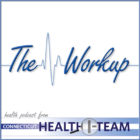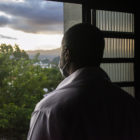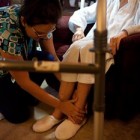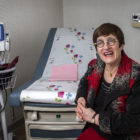I-Team In-Depth
A Dangerous Mix: High Ozone Levels And Obesity
|
For the 29% of Connecticut adults who live with obesity, summer brings a difficult form of air pollution. Ground-level ozone is the colorless, odorless gas formed when auto exhaust reacts with sunlight at temperatures above 80 degrees. Ozone can be dangerous for people who have higher body mass indexes. If the pandemic shutdown were now, those with obesity and others who suffer from the adverse effects of ground-level ozone might have caught a break. Officials know that other forms of pollution dropped significantly during the early spring.







